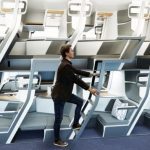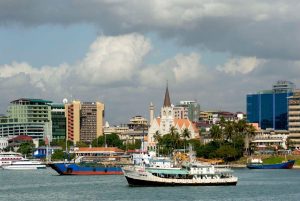The coronavirus has taken a huge chunk from the aviation industry, and the prospect of an impending second wave paints a dark cloud in an already gloomy environment. For many of us, the return to normality is taking forever.
For the airlines and airports, it is a tricky balance between generating much required revenue and adhering to the laid-out health regulations. On a bright note, experts agree that travel will indubitably rebound, though no model can accurately predict when.
From my telescopic lens as an aviation expert, I foresee a paradigm shift on existing pre-flight, in-flight and post-flight rituals when airports reopen.
True to Heraclitus’ quote, “nothing endures but change”, this pandemic has changed everything for everyone globally. Aviation industry players have different expectations as aircraft reignite their engines to soar back to the skies.
Since the coronavirus pandemic is ushering in a new era of air travel, it is time to prepare for what coming back to travel will actually look like. The post-Covid-19 travels will witness fundamental changes in the experience of air travel, depending on airports infrastructure, security protocols, airlines and government laid down procedures.
Previously passengers were required by their airlines to arrive at the airport one to three hours before flight departure. To facilitate obligatory checks, this requirement will change and range from four to six hours before flight departure. Passengers with special baggage may need to arrive earlier to oversee the repackaging procedures.
Full-body disinfection booths could become common, as could cleaning robots sprinkling anti-microbial spray and air steriliser to disinfect public spaces. Baggage will be sanitised and given a tag once the process is complete in what is dubbed as “sanitagging”.
Passengers may need to show identification documents together with an immunity document or health certificate in a process similar to what some states do for yellow fever and polio ahead of travelling to their lands. Airlines may introduce mandatory pre-boarding temperature checks for all passengers.
Passengers will use individual mobile phones to check-in and to generate boarding passes as an alternative to check-in kiosks. Custom-designed plexiglass shields will be ubiquitous as they dot check-in desks, forex bureaus and open offices.
The era of ever-crowded boarding queues has ended. Airlines will send short text messages to its passengers advising on the assigned boarding slots and they will consequently arrive sequentially using their allocated slot time.
The International Air Transport Association already recommends mandatory face coverings for both passengers and crew members. It is likely that the airlines will make wearing masks compulsory for passengers while on board.
Aircraft will employ the concept of “touchless cabin”. To keep clear of touching the seat-back screens, personal devices will dominate the inflight entertainment giving way to personalised inflight entertainment via the passenger’s own gadgets.
This disruptive technology accelerated by the pandemic will hit the last nail in the coffin of printed in-flight magazines. Your Kenya Airways’ Msafiri or South African Airways’ Sawubona may be extinct. The seat-back pockets, assumed to be among the most contaminated spots onboard planes, will ordinarily be empty.
Concerns that the flight attendants could inadvertently pass the virus as they give out meals on board signifies the end of the trolley era. Consequently, passengers picking up their food before they board to limit the chance of a contact infection inflight will be a common sight during boarding.
Passengers may begin buying their meals at touchless vending machines before embarking on a flight. These vending machines will also most likely stock personal protective equipment like gloves and masks to cater for a business opportunity where travelling passengers need to refill their stock.
Unknown by many, travelling passengers have had the option of pre-ordering meals before travelling, but they have seldom maximised this opportunity. This may now become the norm. Some airlines have indicated that they will not be serving meals on flights of less than four hours.
Cabins will have an in-flight janitor cleaning surfaces and lavatories at regular intervals to ensure high standards of hygiene and sanitisation. Going to the lavatory will be in a systematic and sequential order preceded and succeeded by a thorough cleaning and sanitising exercise after each visit.
Soon, the aviation industry will witness a new concept of flying involving flights within the city using urban air mobility, air taxis and drones for personal transport. This will be a concept of door-to-door seamless transportation where passengers use the same “vehicle” for the transportation on the ground and in the air.
My prediction is that the recovery period for the aviation industry will take years if not decades to rebound. Flying may become prohibitively expensive in the long term. The saving grace will be when airlines employ the strategy of lowering fares to stimulate demand and to mitigate the risk of low passenger numbers.
Since the operators need to shore up their balance sheets, governments and global institutions need to collaborate to save and stimulate the industry in the post-pandemic period to save jobs and keep the world connected.
Mr Thendu is an aviation expert with over two decades of experience in air navigation services provision




